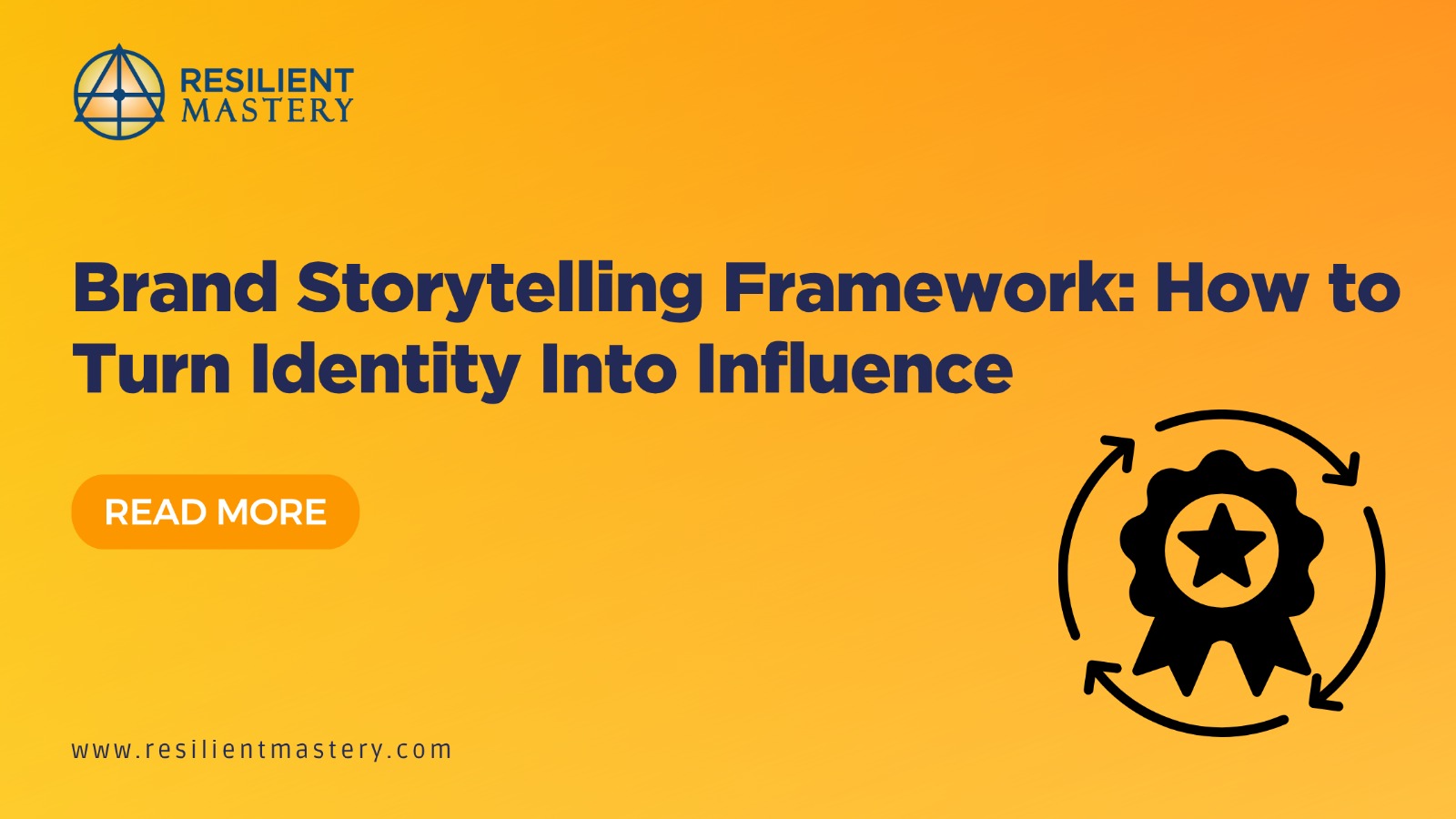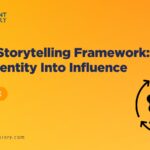Introduction About Brand Storytelling Framework: Why Stories Drive Influence
People don’t remember facts — they remember stories.
In 2025, consumers are overwhelmed by ads, automation, and digital noise. What cuts through the clutter isn’t just a product or service, but a story that resonates.
Great storytelling transforms brand identity into influence, loyalty, and growth. It builds emotional connections, fuels campaigns, and creates communities around shared values.
This article introduces a Brand Storytelling Framework businesses can use to translate identity into influence.
Step 1: Define Your Core Narrative
Every brand story begins with a core narrative — the “why” behind your business.
Questions to Answer
- Why do we exist beyond profit?
- What transformation do we deliver?
- What belief system guides our work?
📊 Pro Tip: Your core narrative should fit into one sentence. Example: “Resilient Mastery exists to help businesses harmonize branding, marketing, and AI for growth that lasts.”
Step 2: Identify the Hero (Hint: It’s Not You)
Classic storytelling frameworks like the Hero’s Journey remind us: the brand is not the hero. The customer is.
The Brand’s Role
- Customer = Hero.
- Brand = Guide.
Think Yoda to Luke Skywalker, or Morpheus to Neo.
Framing your story this way shifts focus from “what we sell” to “how we empower.”
Step 3: Structure the Story Arc
Great brand storytelling follows a flow:
- The Challenge – What problem does your audience face?
- The Struggle – What obstacles stand in the way?
- The Guide – How does your brand provide a path forward?
- The Transformation – What change does the customer experience?
Example:
- Challenge: Small businesses can’t compete with big brands.
- Struggle: They lack budget, tools, and visibility.
- Guide: Resilient Mastery unifies branding, marketing, and AI.
- Transformation: Small businesses gain authority and growth.
Step 4: Infuse Authenticity and Emotion
Data informs decisions, but emotion drives them.
Emotional Storytelling Levers
- Aspiration: Show what’s possible.
- Empathy: Reflect customer struggles honestly.
- Values: Align with causes bigger than business.
📊 Stat: 77% of consumers buy from brands that share their values.
Step 5: Choose the Right Mediums
Different platforms amplify different parts of your story.
- Website: The full narrative, showcased in About + Services pages.
- Social Media: Bite-sized story moments (behind-the-scenes, customer highlights).
- Video: Emotional resonance through visuals and sound.
- Case Studies: Proof through transformation stories.
Websites That Convert: The 2025 Blueprint for High-Impact Online Presence
Step 6: Amplify With Consistency
A scattered story dilutes influence. Consistency across channels creates trust.
Consistency Rules
- Visuals: Fonts, colors, and graphics should align.
- Tone: Conversational, professional, or inspirational — but consistent.
- Message: Core narrative reinforced everywhere.
Step 7: Measure Storytelling ROI
Storytelling isn’t fluff — it drives business results.
Metrics to Track
- Engagement (likes, shares, comments).
- Time on page (are people reading?).
- Conversions attributed to content.
- Brand search volume (growth in awareness).
📊 Pro Tip: Pair storytelling with analytics tools to see how narratives directly fuel leads and sales.
Case Studies: Storytelling in Action
Patagonia
Core Narrative: Protect the planet.
Execution: Campaigns focused on environmental activism.
Result: Customers don’t just buy clothes — they join a movement.
Airbnb
Core Narrative: Belong anywhere.
Execution: Stories of real hosts and travelers.
Result: Brand identity as a global community, not just a booking platform.
Small Business Example
A local bakery shared stories about family recipes and community events. Their Instagram grew 4x, and foot traffic surged after press picked up their story.
The Resilient Mastery of the Brand Storytelling Framework (Recap)
- Define your core narrative.
- Position the customer as hero.
- Use the challenge → guide → transformation arc.
- Infuse authenticity and emotion.
- Deliver stories in the right mediums.
- Stay consistent across channels.
- Measure and optimize storytelling impact.
Conclusion: From Identity to Influence
Your identity is who you are. Brand Storytelling Framework is how you make the world care.
In 2025, brands that master storytelling don’t just sell — they build influence, communities, and movements.





